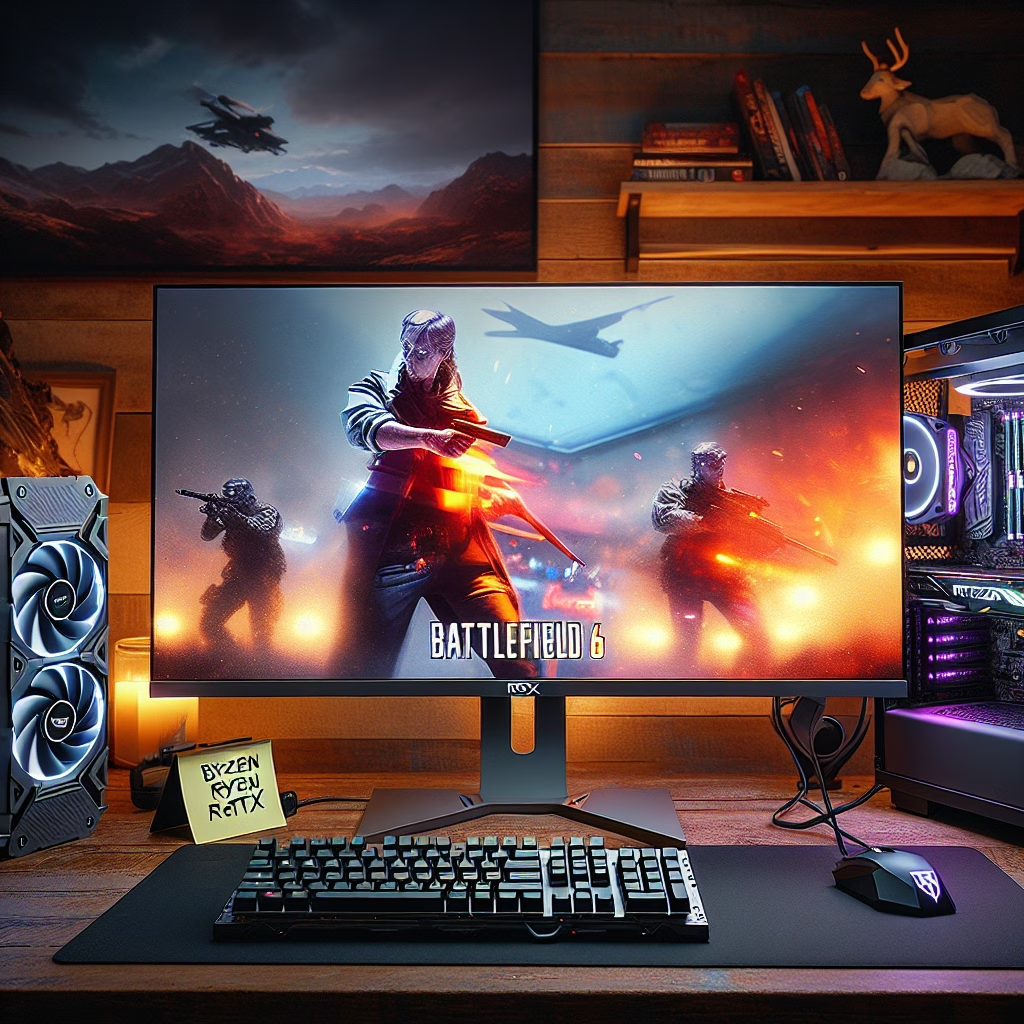In the thrilling world of gaming, Battlefield 6 is making waves, notably for its stunning performance metrics. When paired with the Ryzen 9800X3D and the mighty RTX 5080, gamers can achieve a jaw-dropping 300 FPS. Yes, you read that right—three hundred frames per second! For those who thrive on pixel-perfect visuals and lightning-fast responsiveness, this combination is nothing short of a dream.
Why Choose Ryzen for Battlefield 6?
The Ryzen 9800X3D isn’t just another chip; it’s a powerhouse. With its innovative architecture and impressive core count, it handles the demanding processes of modern gaming with grace. The magic lies in its ability to deliver high frame rates without breaking a sweat. Imagine dodging bullets in Battlefield 6 while your frame rate stays as smooth as butter. Who wouldn’t want that?
Now, let’s talk about the graphics card—enter the RTX 5080. This beauty not only enhances visuals but also supports advanced features like ray tracing and DLSS (Deep Learning Super Sampling). Together with the Ryzen, it creates an experience where every explosion looks like it’s happening right in your living room (minus the debris, thankfully). Here’s what makes the RTX 5080 a standout:
- Ray Tracing: Provides realistic lighting and reflections.
- DLSS: Enhances performance without sacrificing visual quality.
- Superfast Memory: Ensures quicker loading times and smoother gameplay.
Intel’s Performance: A Bit of a Stumble
However, not all is sunshine and rainbows in the land of Battlefield 6. Reports suggest that when players opt for the Intel Core i9-14900K instead of our beloved Ryzen duo, they may experience nearly a 33% performance drop. Yikes! That’s like jumping out of a plane and forgetting your parachute. While the i9 is no slouch—it’s got power—it seems to struggle to keep pace with the mighty combo of Ryzen and RTX.
This performance discrepancy raises a question: Is it time for Intel to hit the gym? Maybe add a few more cores or enhance their thermal management? After all, nobody wants their gaming rig to overheat during an epic firefight!
A Closer Look at Frame Rates
So, what does achieving 300 FPS mean for gamers? It translates to fluid gameplay where every movement is sharp and responsive. In competitive scenarios, this can be a game-changer—literally! The difference between victory and defeat can hinge on those extra frames. Plus, higher frame rates reduce motion blur, allowing players to spot enemies quicker than ever before.
For those curious about system requirements, having a robust cooling solution becomes crucial when pushing these components to their limits. No one wants their precious hardware throttling down because it got too hot under pressure! Here are a few cooling options:
- AIO Liquid Coolers: Excellent for overclocking scenarios.
- High-Performance Air Coolers: Good balance of performance and price.
- Thermal Paste: An essential for proper heat transfer.
The Future of Gaming Performance
The gaming landscape is rapidly evolving, with each new generation of hardware promising even greater feats of engineering. As we look ahead to 2025, it’s clear that optimizing performance will remain a key focus for developers. With advances in technology like AI-driven optimizations and enhanced graphical fidelity, games will continue to push boundaries.
In conclusion, if you’re considering upgrading your setup for Battlefield 6, pairing the Ryzen 9800X3D with an RTX 5080 might just give you that edge you need. Just be prepared for some friendly ribbing if you show up with an Intel rig!
What are your thoughts on this epic hardware showdown? Have you experienced the glorious frames of Battlefield 6? We’d love to hear from you in the comments below!
A big thank you to WCCFTech for the original insights into this hardware performance extravaganza! You can check out their article here.

